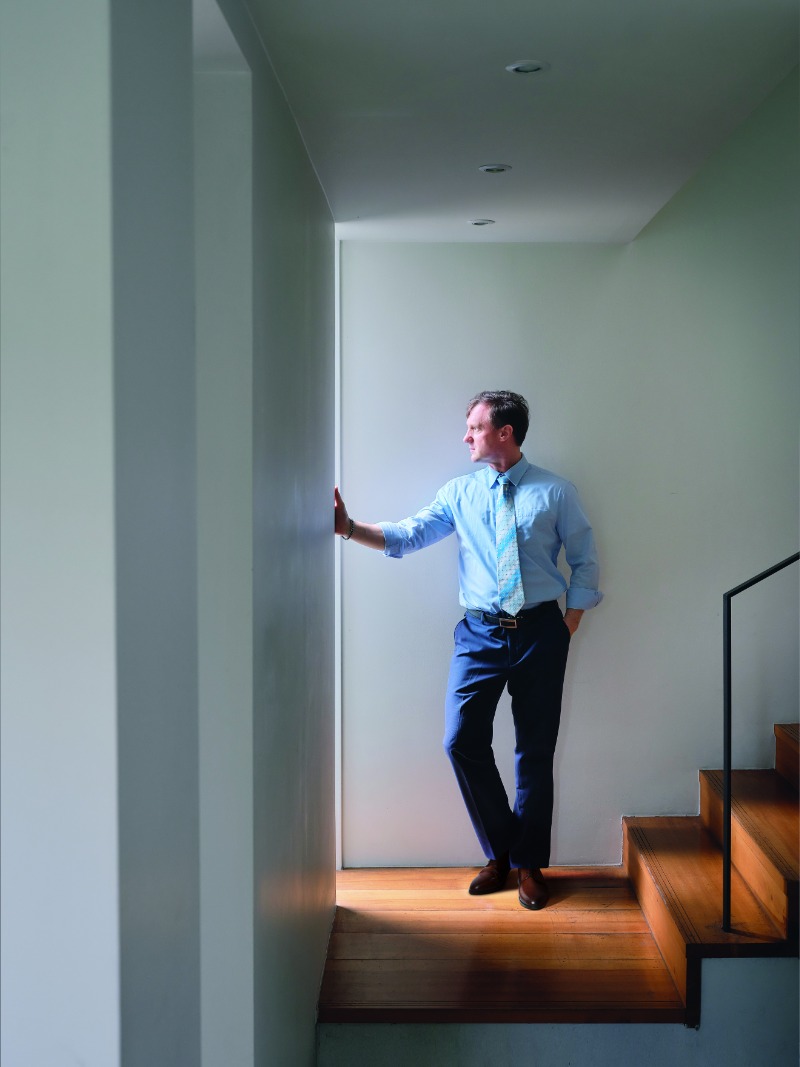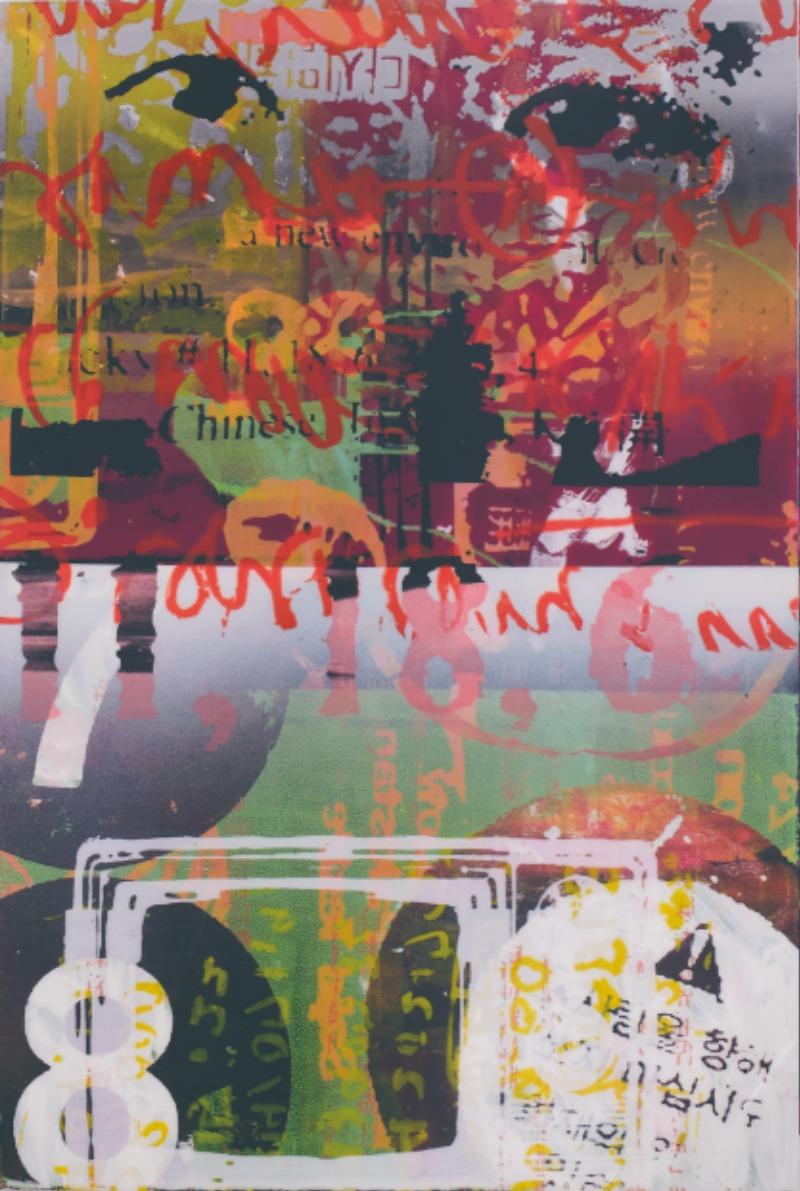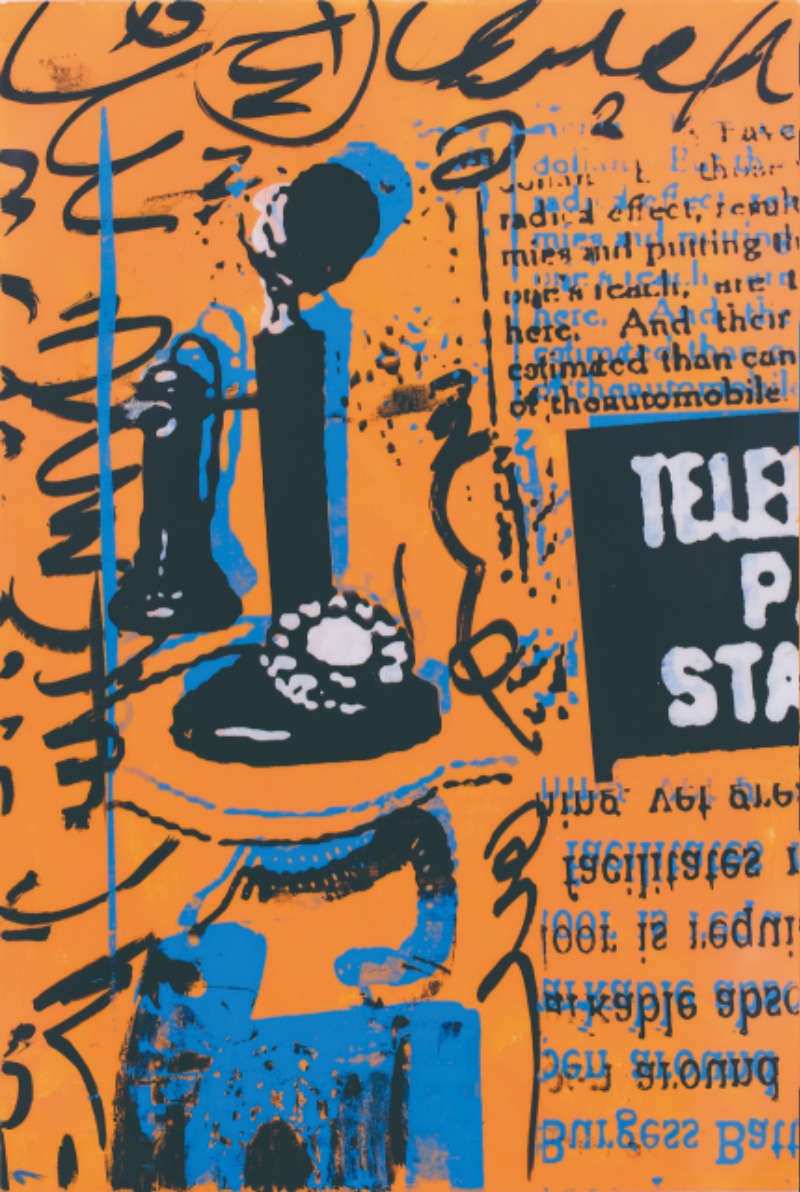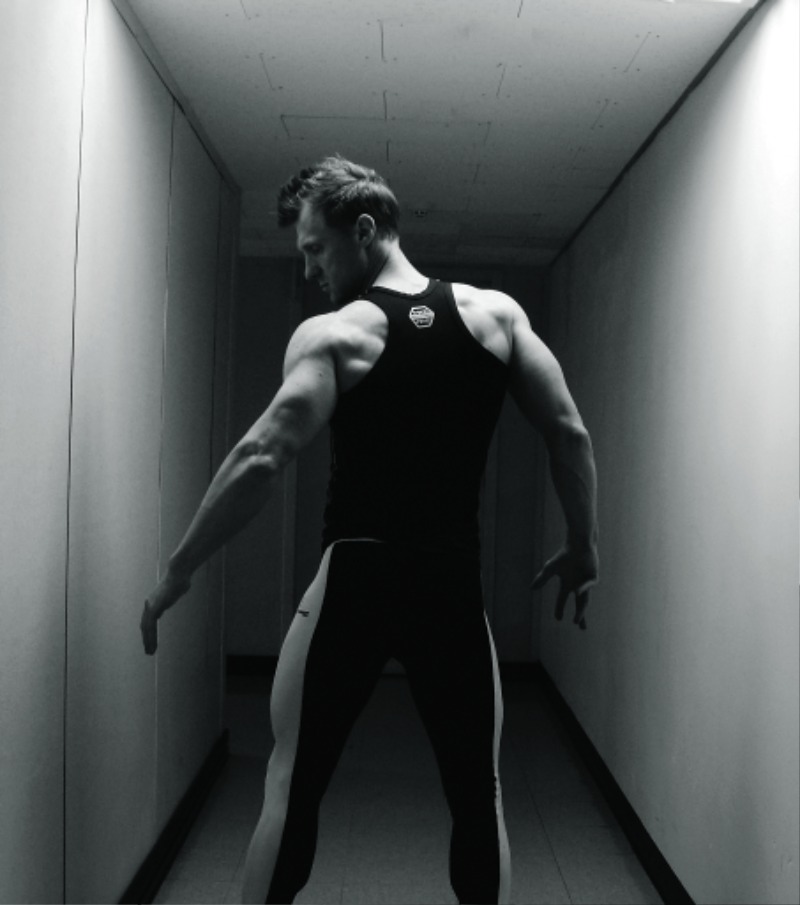For many who come to Korea, teaching English is a brief stop on the road to something else. For Christopher Maslon, it became permanent. But he also thrives in art, his original pursuit, and dabbles in other areas, always ready to add to the things he loves to do.

Christopher Maslon is difficult to categorize in one word. He thrives in a classroom, an art gallery and a gym full of bodybuilders.
Dressed in a blue shirt and striped tie, Christopher Maslon certainly looks the part of an English professor. But the stripes have a bit of a sparkle to them, suggesting that there’s something more.
Look him up on social media and you’ll find his Facebook is devoted to art while his Instagram is filled with bodybuilding photos and the occasional picture of characters such as Spiderman and Superman, and oddly enough, a gentleman from the Victorian era. You begin to wonder if his accounts have been hacked. “I don’t like to let my left hand know what my right hand is doing. I like to separate things into different categories,” says Maslon.
Aside from being a professor, it turns out that Maslon is an artist, as well as a bodybuilder who does a bit of cosplay on the side; there are occasional modelling and acting gigs and bits of Victorian gothic art and fashion. His attitude to life calls for taking opportunities as they arise, and should they fall in unfamiliar territory, to simply learn along the way. “Whenever something is offered to me that seems massive, I completely throw myself at it,” he says. Still, Maslon did not immediately jump at the chance to try life in Korea.
When Maslon, living in the U.S. state of Ohio after graduating from art school, received a mass email sent out by his Korean neighbor, he was dismissive. The solicitation said, “Teach English in Korea.” Maslon promptly hit the delete key. Nevertheless, the email niggled at him for days. Finally, he went to confer with his neighbor, a professor of computer technology, who exclaimed, “You’re the one!” Taken aback, Maslon protested but soon found himself on a plane to Korea, enticed by a free ticket and a guarantee that he could return after a week if he didn’t like it.
A New Life
“I landed in Korea on March 31, 2002, which I call my ‘Korean birthday,’” Maslon says. “That was 20 years ago, and I never went back home.” It was the year of the Korea/Japan World Cup Finals. Though Maslon wasn’t a soccer fan, he got caught up in the fever. He even attended a dinner where he sat next to a middle-aged Dutchman, only to realize later while watching the news that the man was Guus Hiddink, the head coach of the Korean team. “It was so wonderful to be here at that time. It was magic. I felt like I was a part of history,” he recalls.
Over time, Maslon came to admire Korea’s work ethic and fell in love with its food and period TV dramas, forming an especial affinity for Joseon kings and yangban (the nobility). He also fell in love with a linguistics student, Kwon Sunae, whom he met at church on his third day in Korea. They were married three years later. At this memory, Maslon laughs and mimics the advice of his Korean landlady back in Ohio: “Now, Christopher, don’t go marrying the first Korean girl you see right off the plane!” Their daughter, Elizabeth, was born in 2006.
Unexpectedly, Maslon also fell in love with teaching. He began with a nine-month contract at Dong-A Technical High School in Daejeon, the fifth-largest metropolis in Korea, and realized that he had found his dream job. “I was meant to explain things. Share things. Describe things. It’s my passion. It is the absolute greatest thing that ever happened to me,” he says. After three years he moved on to Daejeon Health Sciences College (now Daejeon Health Institute of Technology), where he continues to teach not only English courses but also art history, art design and photography. To increase his professionalism, he obtained an MA in TESOL (Teaching English to Speakers of Other Languages).
Andy Warhol Effect
For Maslon, this career turn was unexpected because, apart from hating school himself, he felt he was born to be an artist. When he was four years old and left to amuse himself one day, he found a box of crayons and drew all over the walls – mostly trees and animalsin black and purple.
Maslon’s main media is silkscreen printing, inspired by Andy Warhol’s iconic “100 Cans,” which he first saw in a high school art class. “Fireworks went off in my brain. From that day forth, I was fascinated with printmaking and became obsessed with learning the process that Andy Warhol used to create his Marilyn Monroes and Campbell’s soup cans,” he says. Knowing exactly what he wanted to do with his life, he gained a scholarship to Columbus College of Art and Design in Ohio and threw himself into the art of serigraphy.
In Korea, he was delighted to discover its time-honored printing tradition that includes Jikji simche yojeol, the oldest book in the world printed with movable metal type. Fortunately, his teaching job left time to work on his art as well and he soon joined the Daejeon Arts Collection (DJAC), a group of foreign artists.

“Lucky Numbers”
2015. Silkscreen on vinyl. 30 x 42 cm.

“Telephone Series #1 (3)”
2015. Silkscreen on vinyl. 30 x 42 cm.
Neo-Pop Identity
A breakthrough came when his silkscreen of a 1940s American refrigerator featured at the DJAC spring show in 2015 caught the eye of the gallery owner. He took Maslon to a studio known as the Korea Printing Residency Program. “As soon as I came to the doorway of the building, I could pick up the smell of the intaglio ink. I knew I was discovering a place where printers met. I was in nirvana. I was given a two month residency. For the first time in my life, I could spread my wings and do anything that I wanted,” he says.
During those two months, he produced 60 works, in the process establishing his identity as a Neo-pop artist and expanding into printing on plastic. A series titled “Rocket Number Nine,” inspired by the Lady Gaga song of the same title, was featured in a solo exhibition at Gallery Yian in Daejeon in 2016. Four of those prints now hang at the U.S. National Aeronautics and Space Administration (NASA) in the office of physicist Dr. Phillip Metzger. The two met online through a beach sand collecting group.
While some may look for deeper meaning, Maslon says, “My artwork is about the things I love. And I have learned that that there is someone else out there who loves the same things.” Many of these things are everyday objects such as washers, dryers, telephones, typewriters, gramophones and animals or vegetables. He has also done microprints of bodybuilding.
“My Neo-pop prints are collections, an electric mixture or mass of modern and vintage images together. This represents a feeling or a collection of feelings. A fuzzy conglomerate or layering of sometimes unclear images. No one knows where it starts, or ends,” he explains. “I also create singular objects and electrify them, to be adored or looked at with reverence. Studied. Admired. I have always loved individual labeling, singularity and making sure something is identified and given a proper name, with a proper history, to what it is and where it is from.”

In addition to teaching and art, Christopher Maslon enjoys bodybuilding. Exercise not only changed his body, it also boosted his confidence and opened up new, interesting opportunities.
Bodybuilding & Gothic Fantasies
Aside from his two passions, teaching and art, Maslon says that bodybuilding is one of the best things he has ever done. In 2004, he realized his fitness had waned too far; he had trouble climbing the stairs at the high school where he taught. He started exercising and, for three years, traded with a personal trainer: one hour of English lessons for a one-hour workout. Then a bodybuilding show caught his attention. He told himself, “I will do this.” A year later, he was standing on the same stage and came third in his division. In 2014, he placed third in the Men’s Classic division of the Seoul Musclemania competition – not something on the resumé of many English professors. Once a skinny boy who was reluctant to take his shirt off at the beach, Maslon says, “Bodybuilding not only transformed my body, it transformed my confidence level. This really affected my life because I realized that I had become a completely different person.”
Bodybuilding and his Facebook profile photos have led to some “amazing opportunities.” A modeling agency contacted him in search of a muscular foreigner to star in a television commercial for the English app “Santa TOEIC” with legendary actor Lee Sun-jae. Then he was cast as an American scientist in the movie “The Spy Gone North” (Gongjak), where he appears for three seconds. He also indulges in occasional costume play, dressing up as superheroes or in Victorian garb. His love of things Victorian and gothic harks back to the 1960s American television series “The Addams Family” and his own experience of growing up in Monson, Massachusetts in a house almost 200 years old. As the outcome of fantasy photography projects with Daejeon-based Alla Ponomareva, Maslon makes a lot of props these days – skeletons, skulls, gothic coffins, Tiffany-style lamps. If you can imagine it, he can make it.
Almost Perfect
When Maslon speaks, a sort of carnival gets underway on his face. His eyes light up and all his facial muscles go into action as he changes expressions to match the topic of conversation. And he gestures with his hands as well. Apparently, this is why his Korean neighbor in Ohio thought he would make a good teacher: “He said I was charismatic, crazy. I talk and talk, and talk with my hands. I’m a visualist.”
But as he described his experiences since leaving the United States, he occasionally closed his eyes. “I’m a sensitive man. I have to close my eyes because my emotions take over,” he explains. “Korea has given me so much.” In his head, he was visualizing and remembering the past 20 years. He says the journey has been 97 percent good so far – so good, in fact, that he wants to keep it to himself. “I don’t want to invite anyone here. It’s my own private thing,” he says.